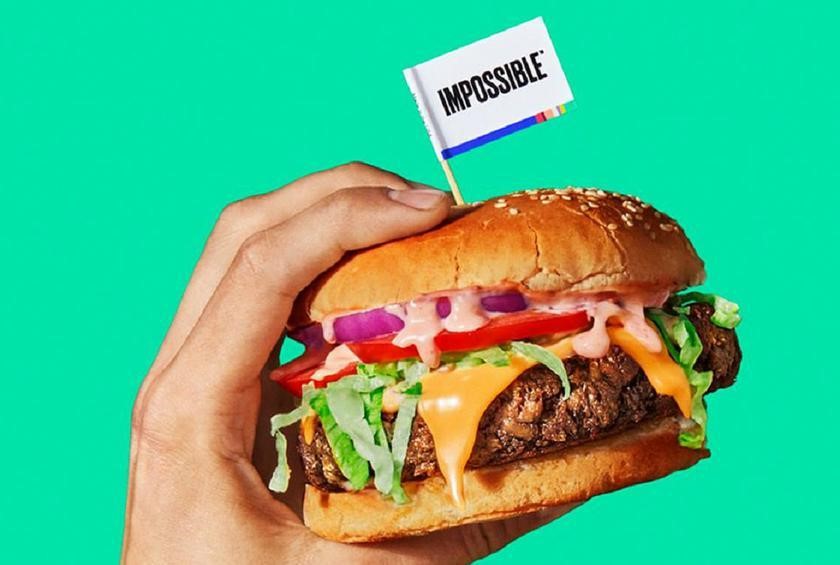Having been working with clients in the hospitality sector for 18 years, hospitality marketing communications is my agency’s, Big Cat’s, bread and butter. The diversity of the sector keeps it so exciting and the ever-changing food trends, changes in health and nutrition and new products and concepts mean that restauranteurs and those working in hospitality need to make sure they are one step ahead and keeping their finger on the pulse for what’s emerging and attracting customers.
Here’s a list of six food and drink trends to look out for this Spring!
- More plant-based meat-free options
Everyone is aware of the growing trend in plant-based diets (it may be worth noting now that ‘plant-based’ is the key dining buzz phrase rather than ‘vegetarian’ and ‘vegan’) and it is safe to say that this is not just a fad; it’s here to stay. Sales of meat-free and vegan items increased by 14% to £352.1m year-on-year to August 2018, whilst just under 300,000 people signed up to Veganuary 2019 (up from 168,542 in 2018). 52% of British shoppers (rising to a huge 68% of 18-24 year olds) say that they either follow or are interested in following a plant-based diet, whether this be vegetarian, vegan or flexitarian. Even a quarter of meat eaters plan to reduce their meat consumption across the next 12 months, probably aided by the introduction of impossibly meaty faux meats, such as the aptly named Impossible Burger.
With the increasing popularity and the obvious demand for food which fits into these diets, it’s becoming increasingly important for restaurants to have a separate plant-based menu that offers a wide variety of options, rather than just a measly cheese and onion pie squeezed onto the bottom as an afterthought. For our client Ember Inns, we incorporated a lot of messaging regarding Veganuary on social media, which received a large amount of engagement. We are even starting to see some brands offer a completely meat-free menu once a week.
- Street food
Street food, of course, is another trend which is still continuing to flourish with Indian and Mexican options leading the way in terms of favourite cuisine, particularly with 15-34 year olds. However, there is a new street food favourite on the horizon; Israeli cuisine. Specialties from Lebanon, Syria and Turkey are particularly gaining momentum among hip forward-thinking restaurants. With a huge current awareness of health and wellness (‘healthification’), and a generation of foodies in search of exotic and regional foods, consumers want healthy but flavoursome fast food. Restaurants are starting to reimagine classic dishes, replacing ingredients with vegetable-based alternatives or a healthy spin.
- Healthification
Healthification is a movement which has seen a reduction in the consumption of carbonated drinks and the rise of non-alcoholic fruit and vegetable based shots, providing a quick dose of goodness to boost the wellbeing of concerned consumers. This wellness trend has led to consumers wanting more transparency in what goes into products and evidence of authenticity. This has resulted in a trend of using natural botanical extracts as ingredients and flavourings because of the ‘promise’ of additional health-related benefits. Cannabidiol, or CBD, is currently being used in pretty much everything, from skincare to coffee and cocktails, and even to pet food. Whilst clinicians say that more research still needs to be done on the health benefits of CBD, consumers report relief from anxiety and pain, which has increased demand and growth in this area.
- Premiumisation
Related to this is the trend of ‘premiumisation’, which is no longer just about price, but also about quality and experience. Consumers know what they want more and more from a brand, which has led to an increased appetite for specialised food and drink options, such as gin bars and a wide variety of craft ales. Consumers believe that ingredients or preparation processes that are of higher quality are worth paying more for.
- Eatertainment
Further to this is a trend of ‘eatertainment’. Dining is becoming more of an immersive experience now and consumers want some form of entertainment along with their food, which is why we’ve started to see the rise in popularity of ‘activity bars’. This has been particularly noticeable in Birmingham with the recent openings of Ghetto Golf, Lane 7 (offering bowling, shuffleboard and arcade games) and Kongs (arcade games and table tennis).
- Instagram-worthy offerings
Directly related to the eatertainment trend is the desire for social currency which is the benefit of being able to share photos from your meal, drinks or general experience on social media. A huge 69% of 18-34 year olds take a photo or video of their food before eating. When deciding which restaurants and bars to visit, consumers are seeking out Instagrammable settings and colours, which is why drinks such as pink gin have proved so popular recently, whilst chefs are adding finishing touches to food to make it ‘Instagram’ ready. Restaurants now not only need to have great food and drink worth talking about, but also interesting and attractive décor that creates the right atmosphere and draws people in to take their Instagram-perfect shots. Visitors to Birmingham’s Nocturnal Animals crowd the white corridor pictured below to pose and add to their Instagram profile, while even more crowds flock to Dirty Martini in London, Birmingham, Leeds, Cardiff and Manchester to pose in front of the well-placed angel wings. Search #dirtymartini on Instagram and that’s all you’ll see.

